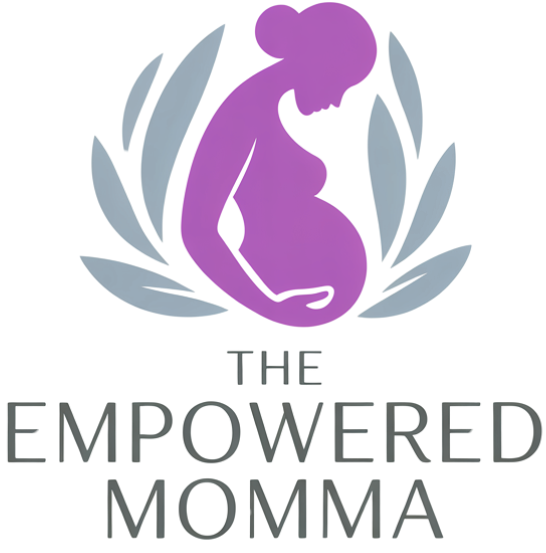Many pregnant women wonder if it’s okay to keep running while expecting. For most women with healthy, uncomplicated pregnancies, running is usually safe and beneficial. Still, it’s important to pay close attention to your body and follow some guidelines to make sure both you and your baby stay healthy. Always talk to your doctor before starting or continuing a running routine during pregnancy. Your exercise plan may need to be changed based on your personal health, but being active is a good goal for most expectant mothers.
Pregnancy brings many changes to your body that will likely affect how you feel when you run. You may notice a change in your balance, joint looseness, and overall comfort. Most experts agree that if you were an established runner before getting pregnant, you can usually keep running if you’re comfortable. The aim during pregnancy should shift from trying to set personal records to keeping up your health and fitness, which means making adjustments to your speed, distance, and where you run.

What Does the Research Say About Running When Pregnant?
There have been a lot of myths about exercise and pregnancy, partly because research on pregnant runners has been limited. Early advice was very strict, sometimes suggesting that pregnant women only do light activities. Today, with more research and better understanding, medical groups now encourage regular moderate exercise during pregnancy.
Groups like the American College of Obstetricians and Gynecologists (ACOG) recommend that women aim for 150 minutes of moderate aerobic activity per week if they have no health problems. Running can fit these guidelines if you run at an appropriate intensity and make safe choices. Regular exercise for pregnant women has been shown to lower the risk of gestational diabetes, high blood pressure (preeclampsia), and the need for a C-section. Being active can also help your baby’s brain develop. While more studies are needed for women who run at a high level, the main message is clear: staying active is good for you and your baby.
Is Running Safe in Every Trimester?
Many women find their running routine changes with each stage of pregnancy:
- First trimester: You may feel very tired or feel nausea, making running harder. It’s common to run less or take a break.
- Second trimester: Most women get some energy back and running often feels easier, though your growing belly and looser joints may affect your balance.
- Third trimester: As you get closer to your due date, running can feel uncomfortable because of added weight, a shifting center of gravity, and more bathroom trips. Many women switch to walking or swimming in these months.
In one study with competitive runners, about 70% kept running at some point while pregnant, but only 31% ran in their third trimester.

When to Talk to Your Doctor About Running
Always talk to your healthcare provider before starting or changing your exercise routine during pregnancy. Your doctor can help spot any health issues that may make running unsafe for you.
You should not run if you have conditions such as:
- Bleeding or spotting
- Preeclampsia (high blood pressure in pregnancy)
- Severe anemia
- Certain heart or lung problems
- Placental issues (like placenta previa)
If you’re expecting twins or more, or if you’ve had several miscarriages in a row, always get your doctor’s advice before exercising.
What Are the Benefits of Running During Pregnancy?
Running while pregnant, when done safely, has many benefits for both mother and baby. It doesn’t just help you stay in shape; it also supports mental and emotional well-being.
| Physical Benefits | Emotional/Mental Benefits |
|---|---|
|
|
Studies show pregnant women who exercise can have a 67% lower chance of depression, and regular running can create a positive sense of routine and control.

Are There Risks to Running During Pregnancy?
Running is generally safe in most pregnancies, but there are possible risks. Knowing what signs to watch for can help keep you and your baby safe.
Does Running Cause Miscarriage or Preterm Labor?
Many women worry that running may lead to miscarriage or early labor. Research shows that running does not cause these problems for healthy women with uncomplicated pregnancies. The baby is protected inside the womb. If you have a history of several miscarriages or a high risk of early delivery, ask your doctor for advice. Otherwise, running is not thought to cause these problems and may even lower your risk of some pregnancy complications.
When to Stop Running and See a Doctor
Stop running and call your healthcare provider if you notice:
- Vaginal bleeding
- Fluid leaking from the vagina
- Frequent hard contractions
- Headache or chest pain
- Dizziness or faintness
- Unusual calf pain or swelling
- Weakness, trouble with balance, or shortness of breath before you start
- Sharp or new pain in the abdomen or pelvis
If you feel unsure, it’s better to stop and ask your doctor.
Pregnancy Problems That May Mean You Shouldn’t Run
If you have certain conditions, running may not be safe. Don’t run (and let your doctor know) if you have:
- Preeclampsia
- Severe anemia
- Specific heart or lung problems
- Placental issues (placenta previa or abruption)
- Multiple pregnancies with risk of early labor
- Recent or ongoing bleeding
Be open about any discomfort or health changes with your doctor so you can make healthy choices together.
Can You Start Running if You Didn’t Run Before Pregnancy?
If you weren’t running before you became pregnant, most experts say it’s not the best time to start. Running is hard on the body, and pregnancy already puts extra stress on your joints and muscles. However, it’s good to stay active-there are safer options than going straight to running.
Advice for Those New to Running
- Don’t start running for the first time while pregnant.
- Instead, choose low-impact activities such as walking, swimming, or using a stationary bike.
- The recommendation is to reach 150 minutes of moderate-intensity exercise each week, which can be split into shorter sessions.
- Build up gradually and focus on how your body feels.
Safe Ways to Add Cardio
Brisk walking is a great choice if you haven’t been a runner before. Over time, you can increase your pace and how far you walk, as long as you’re comfortable. Other helpful activities include swimming, exercise biking, prenatal yoga, or simple bodyweight workouts. Always tell your instructor if you’re pregnant so they can help with safe modifications. Talk to your doctor or a physical therapist for advice.
How Should Experienced Runners Change Their Training During Pregnancy?
If you were already a regular runner, you can often keep running, but your routine will need to change. The main goal should be to stay healthy, not to break your old records. Pay attention to what your body is telling you and adjust your workouts as needed.
How Pregnancy Impacts Running
| Change | Effect on Running |
|---|---|
| Increased blood volume and heart rate | Running may feel harder at the same pace |
| Hormonal changes (relaxin) | Joints become looser; higher risk of injury |
| Weight gain and shifting center of gravity | May change your balance and running form |
| Higher fatigue, especially early on | May need to reduce speed or distance |
Tips for Changing Your Routine
- Use the “talk test”: you should be able to speak while running. If you’re too out of breath to talk, slow down.
- Don’t focus on mileage or speed-adjust workouts to how you feel.
- Be open to walk breaks and extra rest days.
- Shorten your routes if needed.
- Focus on enjoying running, not competing or reaching personal bests.
Running Races While Pregnant
- Ask your doctor if it’s okay to run races.
- Make safety your priority-don’t aim for fast times.
- Stay hydrated and dress in supportive clothes and shoes.
- Watch for uneven surfaces-they can increase your risk of falling.
- Many competitive athletes run races while pregnant, but this is only done with medical supervision.
How to Run Safely While Pregnant
To help protect yourself and your baby, follow these steps:
Important Steps Before and During Running
- Warm up before you start.
- Drink plenty of water before, during, and after your run (about 8 to 12 cups per day).
- Choose safe running surfaces, like tracks or treadmills, to lower the risk of falls.
- If it’s hot or humid outside, consider running indoors or at a cooler time of day to avoid overheating.
- Don’t push yourself to exhaustion. If you feel pain, stop right away.
How to Check Your Running Intensity
- Don’t rely only on heart rate-it naturally goes up in pregnancy, so it’s not always a good marker.
- Use perceived exertion (how hard you feel you’re working) and the “talk test” (able to talk while running).
- If you can’t complete a sentence, you’re working too hard.
- Aim for “moderate effort”-enough to raise your heart rate, but not enough to make talking difficult.
Preventing Injury and Discomfort
- Focus on good form rather than speed.
- Build strength, especially in the core and legs, to help keep joints steady.
- Consider wearing a pregnancy support band for belly or lower back support.
- If you have pain, especially in the pelvis or abdomen, slow down or stop and consult a professional.
Hydration, Nutrition, and Shoes
- Stay well-hydrated to avoid cramps and overheating.
- Eat healthy snacks before runs (like easy-to-digest carbs) and protein after.
- Your shoes may need to be a half or full size larger during pregnancy.
- Wear supportive shoes and bras (there are maternity sports bras available).
Exercise Swaps and Changes for Pregnant Runners
If running becomes uncomfortable, switch to other safe exercises:
- Walking briskly
- Swimming (great for joint relief and comfort)
- Static cycling
- Prenatal yoga or Pilates
It’s also helpful to build strength, especially in your core and pelvic floor. Try:
- Pelvic tilts (to help back and stomach muscles)
- Pelvic floor exercises (also called Kegels)-helps control leaks and support core muscles
- Gentle stretching and strengthening routines
Switch to lower-impact activities once running no longer feels good or safe-this often happens in the third trimester, but varies by person.

Returning to Running After Pregnancy
After giving birth, your body needs time to heal before you get back to running. Be patient and take a gradual approach; returning too fast can cause injuries and slow recovery.
When to Start Running Again After Birth
- Most healthcare providers recommend waiting at least six weeks after delivery, sometimes longer, before starting strenuous exercise.
- Recovery times differ. If you had a hard birth, a C-section, or complications, expect to wait longer. Always get your doctor’s approval first.
- Even after six weeks, your joints and ligaments may still be loose because of hormones. Start with low-impact exercise and add running slowly.
How to Know if You’re Ready
Before you start running again:
- Make sure any bleeding has stopped.
- You should have no pain during daily activities.
- You can walk briskly, climb stairs, and do some basic strength exercises without any problems.
- If you have leaking, pelvic pain, or a feeling of heaviness, see a pelvic floor therapist first.
- Check your core stability-practice engaging deep abdominal muscles without bulging or pain.
Importance of Pelvic Floor Exercises
- Pregnancy and childbirth put a lot of pressure on pelvic floor muscles. Strengthening them helps you heal, prevents incontinence, and supports healthy movement.
- Start pelvic floor exercises (Kegels) as soon as your doctor approves after birth.
- If you have any symptoms (leakage, heaviness, or pain), get help from a pelvic floor therapist who can help you with the right exercises and guidance.
Taking care of your pelvic floor sets up a safe and comfortable return to running and helps you avoid future issues.

